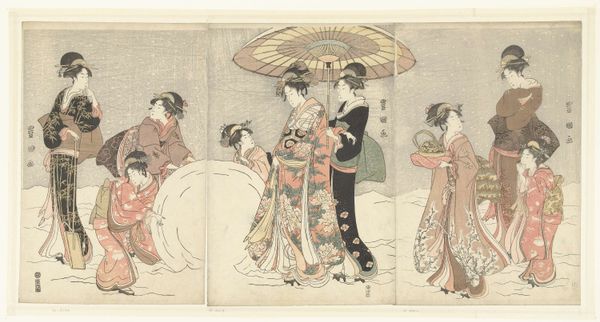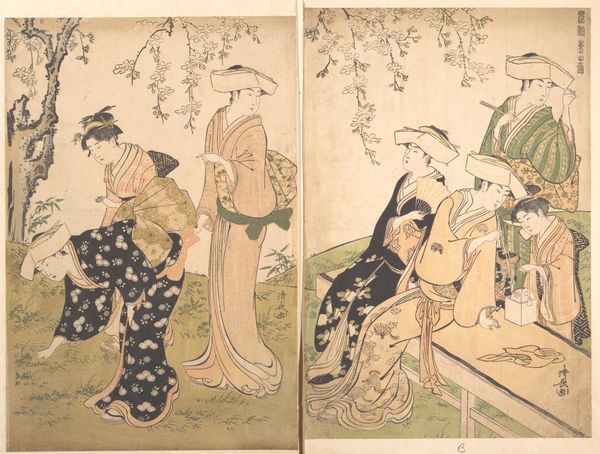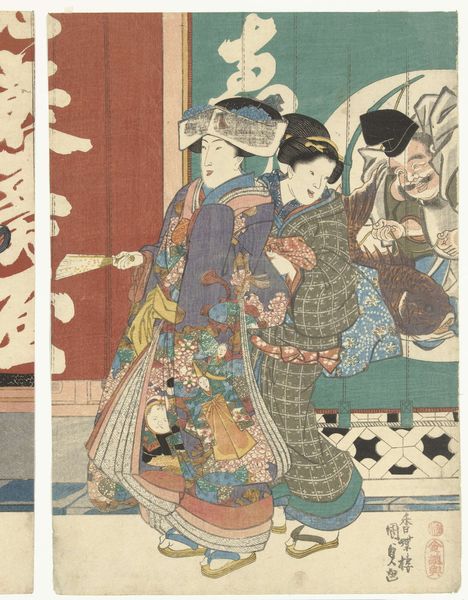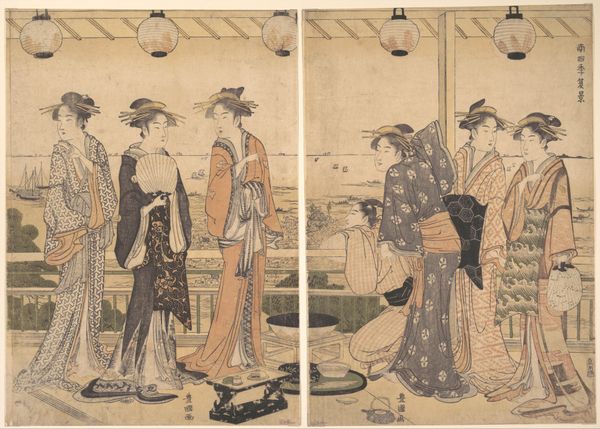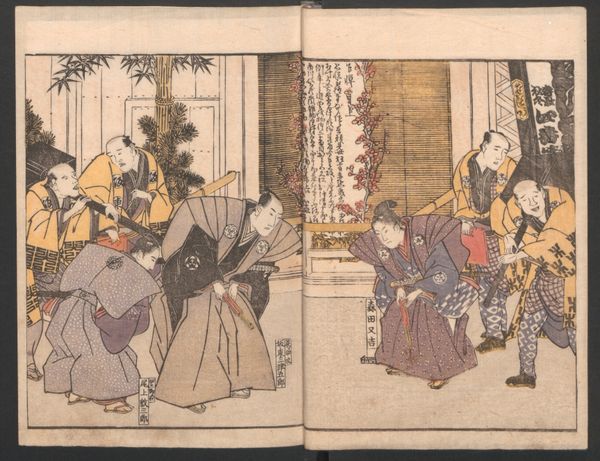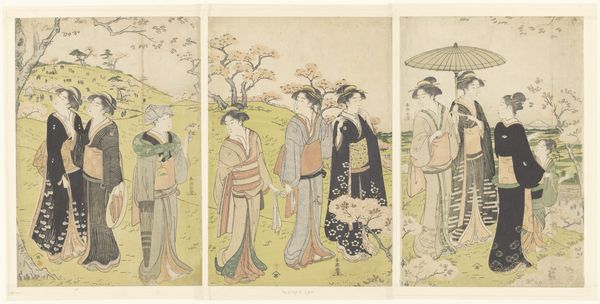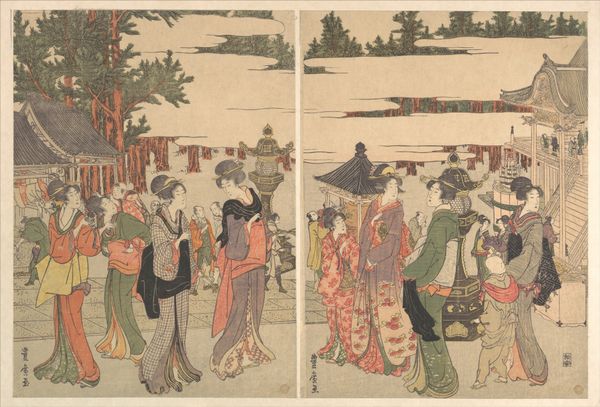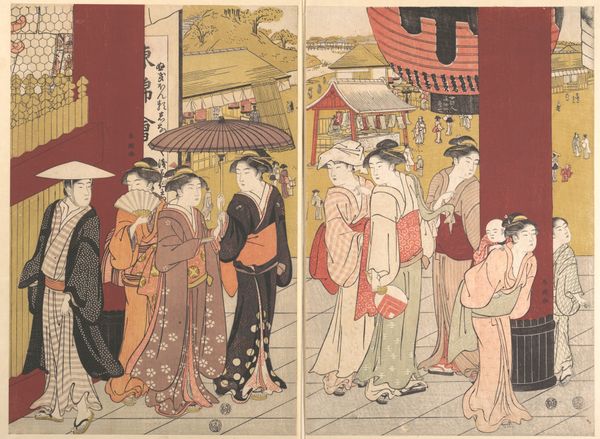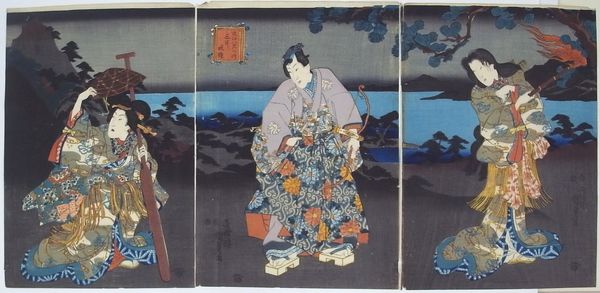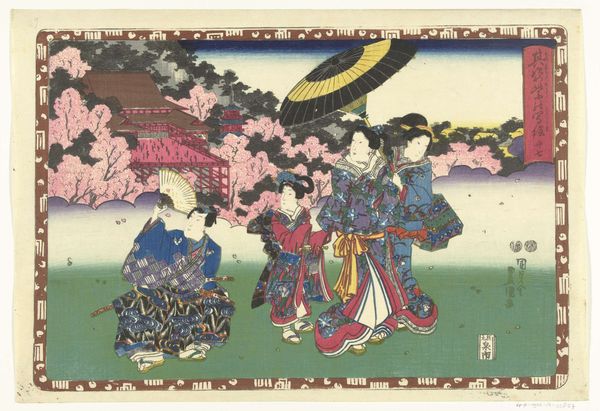
print, woodblock-print
#
portrait
# print
#
asian-art
#
ukiyo-e
#
figuration
#
child
#
woodblock-print
Dimensions: height 360 mm, width 494 mm
Copyright: Rijks Museum: Open Domain
Curator: The Rijksmuseum presents “Kinryuzan in Asakusa in de Oostelijke hoofdstad,” a vibrant woodblock print created by Utagawa Kunisada sometime between 1830 and 1835. What’s your first take? Editor: It’s dreamlike. Like peering into a beautifully faded memory. The figures seem to float in this vast, almost empty space. And the colors, soft yet somehow intense. It's serene but with this palpable feeling of—longing? Curator: Absolutely. Let's delve into the visual language here. Kunisada was a master of Ukiyo-e, meaning "pictures of the floating world.” This style often portrays idealized beauty and scenes of pleasure. Notice how the arrangement mirrors societal roles and the era's cultural nuances? The temple's background against which women and children move...It represents cultural continuity. Editor: It strikes me as both intimate and distant, too. These are portraits, yet there's an element of formality. Almost theatrical. Each gesture is so carefully rendered: The tilt of their heads, the slight lift of their hands, and the garments, laden with patterns that suggest status and taste, maybe also act as talismans. And the weight of the robes looks heavy, right? Curator: Very insightful. Kimono designs were incredibly symbolic; they reveal the wearer's identity or convey seasonal meanings. The arrangement subtly reminds the viewer of moral narratives. What I find fascinating is the idealized, elongated figures against the temple; a place associated with both earthly and spiritual fulfillment. It prompts a reflection on ephemeral pleasures and their contrast to the permanent. Editor: It feels like a play about to unfold or maybe has just finished; the backdrop almost like the props set for its duration; what are these buildings and structures exactly? They appear often enough in art from the period; Is the Asakusa complex an iconic cultural locus? Curator: Spot on. Kinryuzan is the Buddhist temple, a hub of artistic inspiration. It’s been repeatedly featured. This artwork, being a Ukiyo-e print, reproduces in its very fabric not only a scene, but also replicates cultural relevance. It's designed to trigger very specific associations for the original viewers of this woodblock, memories of the area and moral positions on women as cultural participants. Editor: And in our age? This mirror remains useful. Its beauty remains as intriguing and alluring as ever... I almost wish I could jump into this world to feel this melancholic serenity. What would you make of this world for today's sensibility? Curator: It encourages us to consider how symbols evolve and remain, and their relevance across eras. The enduring power of the image reminds us that some forms of beauty and human interaction—even fleeting ones—transcend time.
Comments
No comments
Be the first to comment and join the conversation on the ultimate creative platform.


